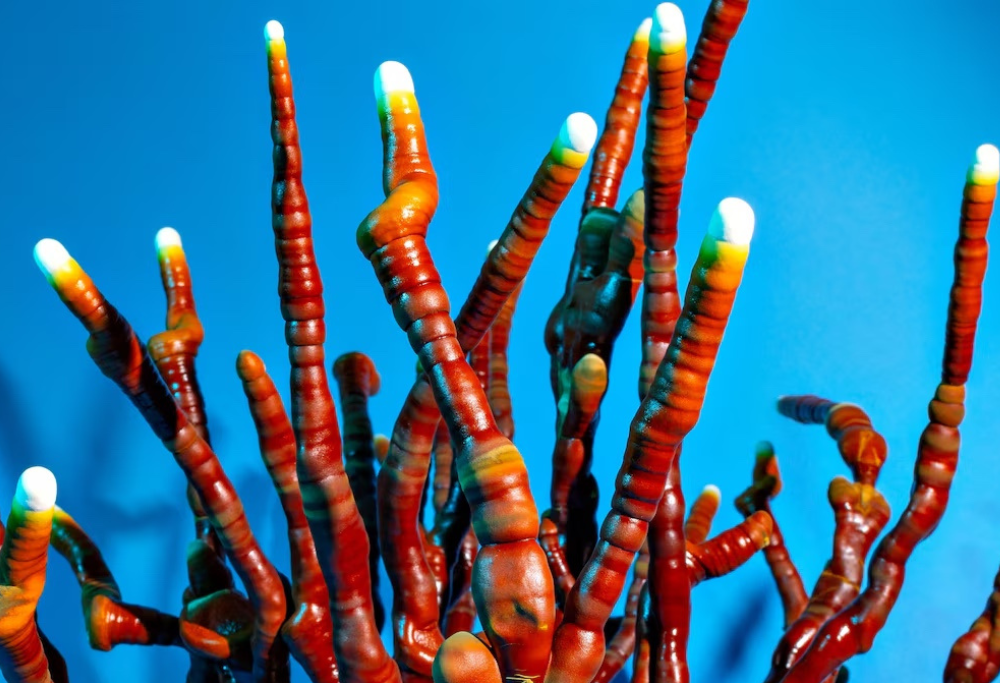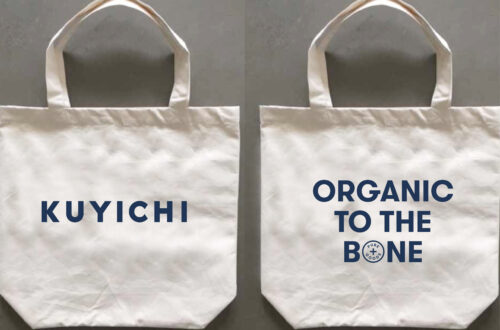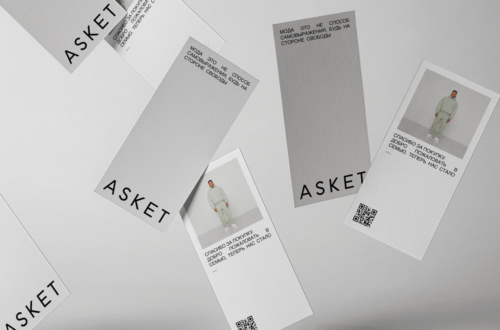In an era where sustainability is paramount, the fashion industry is undergoing a transformation towards more eco-friendly practices. One innovative solution gaining traction is mushroom leather, a sustainable alternative to traditional animal leather. Let’s delve into the fascinating world of mushroom leather and explore its potential to revolutionise the fashion landscape.
The Origins of Mushroom Leather:
In regions like present-day Romania, artisans have preserved centuries-old traditions of crafting mushroom leather. Foraging for hoof fungus in forests, these artisans transform the fungal growth into broad, felt-like sheets known as amadou. This traditional craftsmanship showcases the beauty and versatility of mushroom leather.
The Evolution of Fungal Materials:
Centuries ago, Tlingit artisans in Alaska pioneered the use of agarikon fungus mats to craft pouches, offering a glimpse into ancient craftsmanship rooted in foraging practices. Today, innovators are taking a more intentional approach to mycelium cultivation, leading to the development of mushroom leather as a scalable and sustainable material.
MycoWorks: Pioneering Sustainable Solutions:
At the forefront of mushroom leather production is MycoWorks, a biotechnology company based in South Carolina. Their state-of-the-art facility cultivates mycelium with precision to produce Reishi, a material that closely resembles traditional leather. MycoWorks’s commitment to sustainability and innovation has garnered attention from luxury brands and industry leaders.
The Process Behind Mushroom Leather:
The production process of mushroom leather begins with agricultural waste, such as sawdust and bran, serving as the substrate for mycelium growth. Under controlled conditions, mycelium forms a dense mesh of filaments, creating a material that is both durable and environmentally friendly. This innovative approach reduces waste and minimizes the environmental impact of fashion production.
Neffa: Pushing Boundaries with Liquid-Culture Technique:
In the Netherlands, Neffa is another pioneering company exploring mushroom leather. Using a liquid-culture technique, Neffa creates mycelial slurry that can be molded into various forms, from bags to crop tops. Their emphasis on experimentation and innovation pushes the boundaries of what is possible with mushroom-based materials.
Independent Designers Embrace Mushroom Leather:
Independent designers like Helena Elston and Maggie Paxton are incorporating mushroom leather into their creations, showcasing its versatility and aesthetic appeal. Elston’s organic approach to mycelium appliqués highlights the material’s transformative nature, while Paxton’s exploration of mushroom dyes introduces new color possibilities to the fashion world.
Environmental Benefits of Mushroom Leather:
Mushroom leather offers significant environmental advantages over traditional leather production. Unlike animal leather, which involves resource-intensive processes like raising livestock and tanning, mushroom leather requires minimal resources and generates little waste. Additionally, mushroom cultivation can help mitigate deforestation by providing an alternative source of material for fashion and other industries.
Potential Applications Across Industries:
Beyond fashion, mushroom leather holds promise for various industries seeking sustainable alternatives to traditional materials. From automotive upholstery to interior design, the versatility of mushroom leather makes it a viable option for a wide range of applications. Its durability, aesthetic appeal, and eco-friendly properties position it as a material of choice for forward-thinking businesses.
Research and Development for Future Innovations:
As interest in mushroom leather grows, ongoing research and development efforts are underway to enhance its properties and applications further. Scientists and innovators are exploring ways to improve the strength, flexibility, and color range of mushroom leather, opening up new possibilities for its use in diverse industries. Collaboration between academia, industry, and government organizations is driving innovation and pushing the boundaries of what’s possible with this sustainable material.
Consumer Awareness and Adoption:
Increasing consumer awareness about the environmental impact of traditional leather and the benefits of sustainable alternatives like mushroom leather is crucial for driving widespread adoption. Educating consumers about the production process, durability, and aesthetic qualities of mushroom leather can encourage them to make more eco-conscious purchasing decisions. With growing demand for sustainable products, mushroom leather has the potential to become a mainstream choice in the fashion and manufacturing industries.
As the fashion industry seeks more sustainable alternatives, mushroom leather emerges as a promising solution. With companies like MycoWorks and Neffa leading the way, and independent designers embracing this innovative material, the future of fashion looks greener and more eco-conscious than ever before. Mushroom leather represents a harmonious blend of tradition, innovation, and sustainability, shaping the fashion landscape for generations to come.
What is mushroom leather, and how is it made?
Mushroom leather, also known as mycelium leather, is a sustainable and innovative alternative to traditional animal leather. It’s made from the vegetative part of a fungus called mycelium, which is the network of thread-like structures that make up the main part of the organism. The process starts with growing mycelium on a substrate of agricultural waste, such as sawdust or hemp fibers. Over time, the mycelium grows and interlaces, forming a dense mat that can be harvested and processed into a material that resembles leather in texture and appearance. This material can then be tanned and dyed to create a variety of colors and finishes, just like traditional leather. The process of making mushroom leather is significantly more sustainable than traditional leather production, requiring less water, energy, and chemicals,and producing minimal waste.
What are the environmental benefits of mushroom leather compared to traditional leather?
Mushroom leather offers numerous environmental advantages over traditional animal leather. The production of animal leather involves significant environmental impacts, including deforestation for grazing land, water pollution from tanning chemicals, and greenhouse gas emissions from livestock production. In contrast, mushroom leather production requires minimal resources and generates very little waste. Mycelium can be grown on agricultural waste, reducing the need for virgin materials and diverting waste from landfills. Additionally, the cultivation process requires less water and energy than traditional leather production, making it a more sustainable option. Mushroom leather is also biodegradable, meaning it will naturally break down over time, unlike animal leather, which can take decades to decompose.
Which companies are producing mushroom leather, and what are their products?
Several companies are at the forefront of mushroom leather production, offering a variety of products:
- MycoWorks: This biotechnology company produces Reishi, a high-quality mushroom leather used by luxury brands like Hermès for their Sylvania handbag.
- Bolt Threads: Known for their Mylo™ material, Bolt Threads collaborates with fashion brands like Stella McCartney to create bags, shoes, and other accessories.
- Ecovative Design: This company develops mycelium-based materials for packaging, building insulation, and other applications, showcasing the versatility of mycelium beyond fashion.
- Nat-2: This company produces MuSkin, a vegan leather alternative made from mycelium.
- Zvnder: This startup focuses on creating custom-made mushroom leather products, highlighting the potential for personalization and unique designs.
These companies are leading the way in the development and commercialization of mushroom leather, offering consumers a more sustainable and ethical alternative to traditional leather.
What are some of the potential applications of mushroom leather beyond fashion?
Mushroom leather’s versatility extends beyond fashion, offering potential applications in various industries:
- Automotive Industry: Mushroom leather can be used for car interiors, providing a sustainable and cruelty-free alternative to traditional leather upholstery.
- Furniture: Mushroom leather can be used to create furniture upholstery, adding a touch of luxury and sustainability to interior design.
- Packaging: Mycelium-based materials can be used to create biodegradable packaging, reducing waste and environmental impact.
- Construction: Mycelium composites can be used as building insulation, offering a renewable and environmentally friendly alternative to traditional insulation materials.
- Footwear: Mushroom leather can be used to create shoes, sandals, and boots, providing a sustainable and stylish option for footwear.
These are just a few examples, and as research and development continue, we can expect to see even more innovative applications of mushroom leather in the future.
How durable is mushroom leather, and what is its lifespan?
Mushroom leather is surprisingly durable and can be as strong and resilient as traditional animal leather. It is resistant to tearing, abrasion, and can withstand regular wear and tear. The lifespan of mushroom leather depends on the specific product and its usage, but with proper care, it can last for many years. Some mushroom leather products have been reported to last for decades, showcasing its longevity and potential as a sustainable alternative to animal leather.
What is the current availability and price range of mushroom leather products?
Mushroom leather is still a relatively new material, and its availability is gradually increasing as more companies enter the market. Currently, you can find mushroom leather products from various brands, ranging from high-end luxury items to more affordable options. The price range varies depending on the brand, the quality of the material, and the complexity of the product. However, as production scales up and technology advances, we can expect the price of mushroom leather products to become more competitive with traditional leather, making it an even more attractive and accessible option for consumers.





